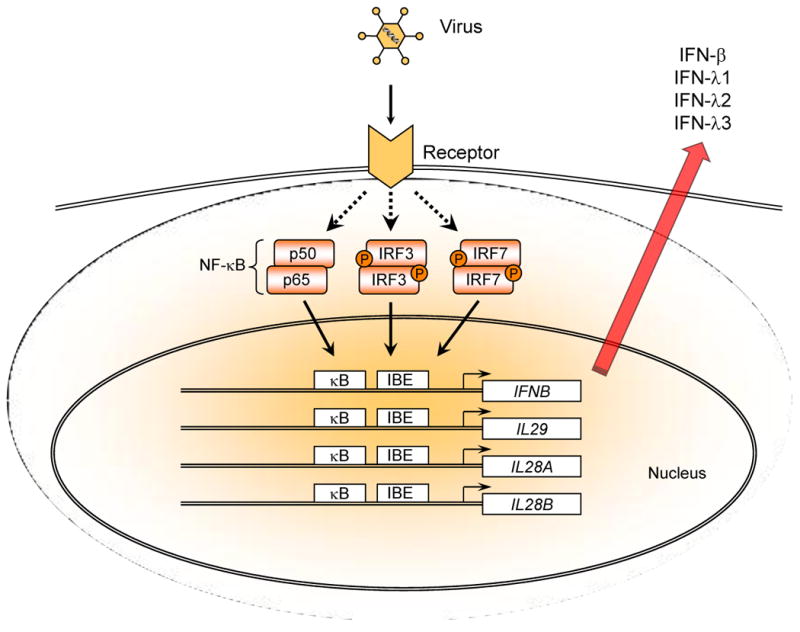Figure 2.

Viral infection induces co-expression of type-I (IFN-α/β) and type-III (IFN-λ) IFNs. Viruses, including HCV, induce co-expression of type-I and type-III IFNs by triggering activation of the Toll-like receptor-3 (TLR3) and/or RIG-I-like receptor (RLR) signaling pathways. This in turn results in the activation of several key transcription factors, including IRF3, IRF7 and NF-κB. IRF3 and IRF7 are activated by serine phosphorylation, and form homodimers or heterodimers which then translocate to the nucleus where they bind to specific DNA sequences known as “IRF-binding elements” (IBE) in the promoters of a number of genes, including the IFN-α, -β and -λ genes. Viral infection also induces simultaneous activation and nuclear translocation of NF-κB. The coordinated binding of NF-κB to κB elements together with the binding of IRF3 and/or IRF7 to cognate IBEs catalyzes transcription of the IFN-α, IFN-β and IFN-λ, (IL28A, IL28B and IL29) genes.
